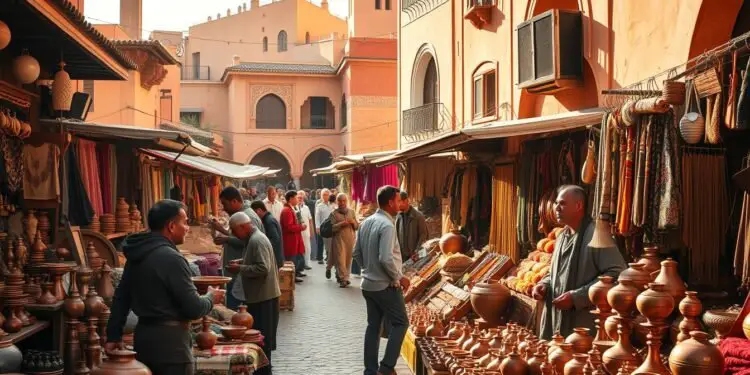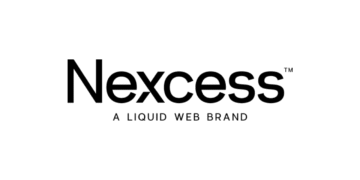What if a nation rich in heritage could transform its cultural influence into economic power? Minister Mohamed Mehdi Bensaid recently called for Morocco to move beyond consuming global culture and start producing it. This vision aligns with the EU’s €600,000 “ICC Project,” aimed at boosting advocacy and exports in the sector.
Despite being a vibrant hub for music, film, and crafts, the country remains underrepresented in global markets. The Gnaoua music scene, major film festivals, and thriving handicraft trades highlight untapped potential. Yet, challenges like trade deficits and pandemic setbacks persist.
With royal-backed initiatives and partnerships like CGEM and the EU, could this mark a turning point? The next four years will test whether investment and policy shifts can unlock growth in key sectors—from digital arts to event organization.
Key Takeaways
- Morocco aims to transition from cultural consumption to production under Minister Bensaid’s leadership.
- The EU’s €600,000 ICC Project supports advocacy and export growth over four years.
- Key sectors include music, film, digital arts, and handicrafts with global appeal.
- Pandemic losses (€187 million) highlight the need for resilient frameworks.
- Royal-endorsed collaborations with CGEM and the EU signal strong institutional support.
The Current State of the Moroccan Creative Economy
From spiritual rhythms to silver screens, cultural production faces systemic hurdles. The cultural sector contributes just 2.9% to GDP, per Policy Center data. Over 78% of businesses in these industries employ fewer than five people, often operating informally.
Gnaoua music, once a spiritual tradition, now drives a $2.5M annual economy through the Essaouira Festival. Yet, broader challenges persist. Film and TV workers average only 120 days of employment yearly, stifling steady growth.
Intellectual property protection lags, with just 12% of musicians holding copyrights. Contrast this with the automotive sector’s €14B exports—a model for scaling production. Handicrafts dominate exports, but lack formal frameworks to maximize value.
Home culture thrives in local markets, yet global representation remains sparse. With 547,500 informal jobs, the sector needs structure to match its potential.
Opportunities in the Moroccan Creative Economy
A wave of fresh talent is reshaping cultural industries with digital innovation and global ambitions. Strategic partnerships and funding are turning potential into tangible growth.
Youth and Innovation: A Driving Force
Young entrepreneurs are leading the charge. The MEDICI program funded 12 fashion-tech startups, blending traditional craftsmanship with cutting-edge design.
Documentaries like “Tresse” highlight this shift. Acquired by Netflix through an EU co-production deal, it showcases storytelling with universal appeal.
EU Support and Strategic Partnerships
The EU’s €600,000 matching fund empowers cultural startups. Since 2020, 38 film projects emerged from the Morocco-EU treaty, boosting international visibility.
A new cultural visa simplifies travel for artists. Events like Marrakech Design Week saw 40% more attendees with EU sponsorship, proving global interest.
These initiatives reflect strong government and institutional backing. They aim to scale local talent into global markets.
Challenges Facing the Sector
Breaking into global markets remains an uphill battle for many cultural producers. While the potential is undeniable, systemic hurdles limit growth. From funding gaps to distribution bottlenecks, the sector struggles to compete internationally.
High Production Costs and Global Competition
Creating high-quality content demands significant investment. Many artists operate from home studios or informal setups, lacking access to professional equipment. This puts them at a disadvantage against well-funded global rivals.
Export statistics reveal a stark imbalance: €46M in cultural exports versus €140M in imports. The Chefchaouen Film Festival’s failed Netflix deal exemplifies missed opportunities due to budget constraints.
Underrepresentation in Global Markets
Only 0.3% of content on streaming platforms originates from this region. Language barriers compound the issue—Francophone and Arabic works often struggle to find audiences beyond local markets.
Even music with universal appeal, like Gnaoua, faces distribution challenges. Fewer than 5% of albums reach Spotify’s global playlists due to limited promotional support.
The cultural creative sector needs stronger frameworks to formalize jobs and attract investment. Without structural reforms, these industries risk remaining niche players.
Conclusion
A nation’s cultural wealth can fuel its future if harnessed effectively. With a projected 9.2% annual growth rate and 150,000 new jobs in creative tech, the role of strategic reforms cannot be overstated.
Key steps include modernizing copyright laws, boosting production incentives, and expanding export networks. The FICC’s plan to launch 50 hubs nationwide is a game-changer, backed by a $20M innovation fund.
As Neila Tazi asserts, “Our creativity must become our competitive advantage.” Public-private partnerships will define the next phase of development. Together, they can turn local talent into global success.
FAQ
What is the current state of the cultural sector in Morocco?
The sector shows strong potential with growing contributions from music, film, and design. However, it faces challenges like limited funding and global competition.
How does youth involvement impact growth in this field?
Young innovators bring fresh ideas, digital skills, and entrepreneurial energy, driving new opportunities in art, media, and technology.
What role does the government play in supporting these industries?
Policies aim to boost infrastructure and funding, but more investment is needed to enhance global competitiveness and local development.
Why is global representation a challenge for Moroccan creators?
Limited marketing reach, high production costs, and competition from established markets make it difficult to gain international visibility.
How can EU partnerships benefit Morocco’s cultural industries?
Collaboration offers funding, expertise, and access to broader networks, helping local talent scale their work and enter new markets.



